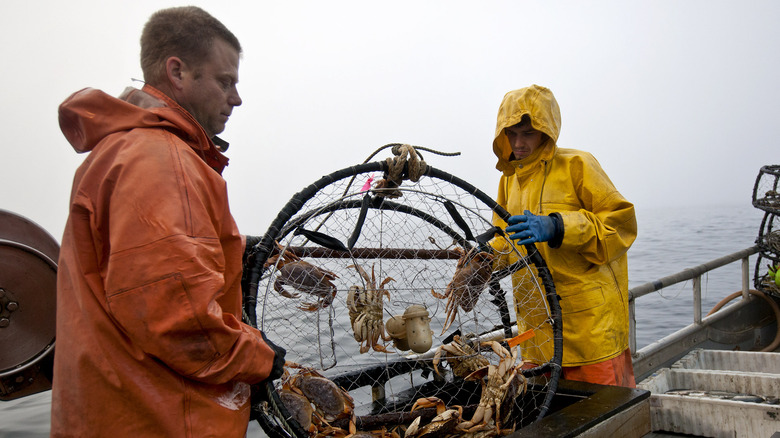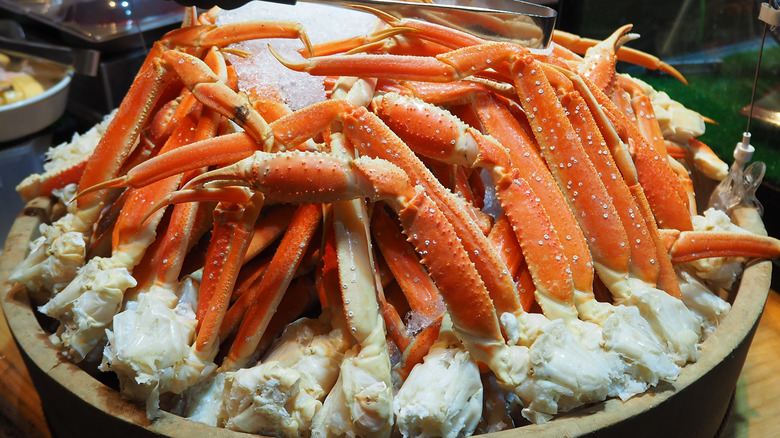The Real Reasons Crab Fishing Is So Dangerous
If you've ever watched "Deadliest Catch," you know commercial crab fishing is dangerous. It's right there in the title. But the Alaskan king crab fishery — where crews featured on the show risk their lives to put seafood on our tables — isn't the deadliest place to go crab fishing in US waters. That unsavory distinction, according to the Centers for Disease Control and Prevention, goes to the West Coast Dungeness crab fishery.
The Bering Sea/Aleutian Island crab fleet — of "Deadliest Catch" fame — averaged eight fatalities a year in the late 1990s, adding up to a death rate of 770 people out of 100,000, the CDC notes. But after the Coast Guard began dockside stability and safety checks, fatalities fell to less than one per year.
Compare that with the West Coast Dungeness fishery where eight crew members died between 2010 and 2014, the government health body said. Five perished in vessel disasters while three died in falls overboard. In the Atlantic crab fishery off the West Coast, three fishers lost their lives while fewer than five Gulf of Mexico crabbers died in that time. Another CDC report notes that 33 West Coast Dungeness crab fisherman drowned between 2010 and 2013.
This area has been dangerous for a while. From 2000 to 2009, 25 died in the West Coast Dungeness crab fishery, more than twice the fatalities in the "Deadliest Catch" fishery, according to CDC data. "The data clearly demonstrates that the West Coast Dungeness crab fishery is one of the most dangerous jobs in the world," said law firm Kraft Davies Olsson.
Why is commercial crab fishing so dangerous?
This doesn't even take into account the industry's high rate of injuries, which often aren't reported, according to Hakai Magazine. For Dungeness crab fishing in particular, the smaller boats used are "more vulnerable to sinking and capsizing than larger fishing vessels and don't have the safety programs of larger commercial fishing vessels," Kraft Davies Olsson said.
For the aptly named snow crab, fishing season runs during the coldest months of the year, notes educational website Crab-O-Licious. And the season for red and blue king crab falls during autumn and winter. "A fall into these cold waters is going to take an immediate rescue in order for the person to survive," cautions The Cold Wire. The site also lists rough seas and weather conditions as dangers. Crabbers have to work far out in the ocean, and the rough waters make a fall or slip much more likely.
Getting tangled in a rope that has hundreds of pounds of crab pots on them is also a risk, as is vessel malfunction, The Cold Wire says. You may have even seen dramatic footage of a Coast Guard helicopter raising someone from the deck of a stranded ship.
One of the other key risks is exhaustion from long hours. "It's not unheard of to work 18 to 22 hours," veteran Dungeness crab fisher John Corbin told Hakai Magazine. "You get tired and your judgement gets awful sometimes."

